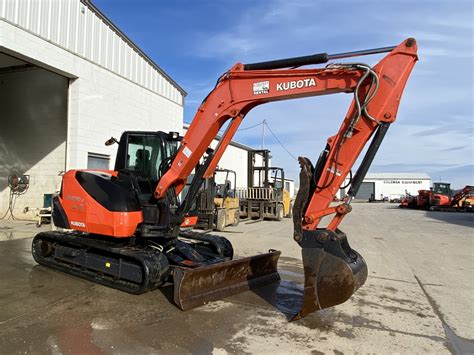excavator terms Learn the meaning of 15 terms related to excavation, trenching and shoring from the OSHA Technical Manual and Ron Meyer Excavating, Inc. Find out how to identify and prevent hazards and ensure safety in excavation work.
Specs for the Bobcat 322. Find equipment specs and information for this and other Mini Excavators. Use our comparison tool to find comparable machines for any individual specification.
0 · what is an excavator person
1 · what are excavators used for
2 · is an excavator a vehicle
3 · how does an excavator work
4 · how do excavators rotate
5 · how an excavator works
6 · excavator explained
7 · can excavators unscrew themselves
The Cat mini excavator is designed to help keep you safe on the job. Courtesy work lights and a fluorescent retractable seat belt with optional seat belt reminder system are just a couple of the safety features we’ve built into the machine. .
what is an excavator person
Learn the definition, types, equipment, techniques, and safety of excavation for .
Learn the meaning of excavating, a term for digging and removing soil, rock, and other materials from the ground. Find out the different types of excavating, such as topsoil, earth, rock, and muck excavating, and the equipment used for each. Learn the definition, types, equipment, techniques, and safety of excavation for construction projects. This article covers the most important excavation terms and concepts, such as backfill, shoring, trenching, and OSHA regulations. Learn the meaning of 20 common terms related to excavators, such as boom, bucket, ground clearance, and swing. Find out what 300 DL means in an excavator and how it affects the performance and efficiency of the machine.
skid steer ground clearance
what are excavators used for
Here are some key terms and descriptions that will help you navigate your way through the excavation and/or demolition process. Excavation Terms. backfill Material used to fill an excavation after the necessary work has been completed. It involves replacing the soil or other materials that were removed during excavation. benching
Learn the meaning of 15 terms related to excavation, trenching and shoring from the OSHA Technical Manual and Ron Meyer Excavating, Inc. Find out how to identify and prevent hazards and ensure safety in excavation work. Excavator: An excavator is a large machine used to dig trenches and holes. It has a large bucket on its arm that can scoop up dirt and rocks. Excavating: Excavating is the process of digging trenches or holes. This can be done by hand or with a machine such as an excavator. Learn about seven types of excavators, from crawler to mini, and how they are used for different projects. Find out the pros and cons of each excavator and the common attachments they use. Excavators go by quite a few names -- diggers, track hoes, 360s, JCBs, and even rubber ducks. There’s quite a bit of terminology that goes with excavators, too. That’s why we put together this list of 20 common terms related to excavators that everyone in .
An excavator is a heavy construction equipment for digging, lifting, and truck loading. Learn about the different types of excavators, their parts, and how to select the best one for your job.
Earth-moving machinery — Hydraulic excavators — Terminology and commercial specifications 1 Scope This International Standard establishes terminology and the content of commercial literature specifications for self-propelled crawler and wheeled hydraulic excavators and their equipment and attachments. Learn the meaning of excavating, a term for digging and removing soil, rock, and other materials from the ground. Find out the different types of excavating, such as topsoil, earth, rock, and muck excavating, and the equipment used for each. Learn the definition, types, equipment, techniques, and safety of excavation for construction projects. This article covers the most important excavation terms and concepts, such as backfill, shoring, trenching, and OSHA regulations.
Learn the meaning of 20 common terms related to excavators, such as boom, bucket, ground clearance, and swing. Find out what 300 DL means in an excavator and how it affects the performance and efficiency of the machine.Here are some key terms and descriptions that will help you navigate your way through the excavation and/or demolition process. Excavation Terms. backfill Material used to fill an excavation after the necessary work has been completed. It involves replacing the soil or other materials that were removed during excavation. benching Learn the meaning of 15 terms related to excavation, trenching and shoring from the OSHA Technical Manual and Ron Meyer Excavating, Inc. Find out how to identify and prevent hazards and ensure safety in excavation work.
skid steer hire northern ireland
Excavator: An excavator is a large machine used to dig trenches and holes. It has a large bucket on its arm that can scoop up dirt and rocks. Excavating: Excavating is the process of digging trenches or holes. This can be done by hand or with a machine such as an excavator.
Learn about seven types of excavators, from crawler to mini, and how they are used for different projects. Find out the pros and cons of each excavator and the common attachments they use.
Excavators go by quite a few names -- diggers, track hoes, 360s, JCBs, and even rubber ducks. There’s quite a bit of terminology that goes with excavators, too. That’s why we put together this list of 20 common terms related to excavators that everyone in .
An excavator is a heavy construction equipment for digging, lifting, and truck loading. Learn about the different types of excavators, their parts, and how to select the best one for your job.

is an excavator a vehicle

8,000 Lbs. Mini Excavator; 26.5 h. p. water cooled diesel engine; Variable displacement piston pumps; 2-speed travel; Hydraulic pilot controls; Auxiliary hydraulics standard; Standard with A-F quick change valve; Rubber or steel tracks; Standard backfill blade; 10′ 4″ digging depth; Travel pressure boost system
excavator terms|how do excavators rotate